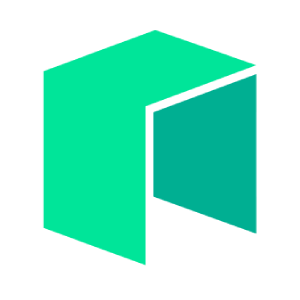
NEO
NEO Конвертер цін
NEO Інформація
NEO Ринки
NEO Підтримувані платформи
| ENEO | ERC20 | NRG | 0x2464dD0E7eeCA2b880ECF15C7AB3A81790e0aD4C | 2021-03-03 |
Про нас NEO
Neo — це платформа блокчейн з відкритим кодом, запущена в 2014 році під назвою Antshares Да Хонгфея та Еріка Чжана. У 2017 році вона була перейменована на Neo. Платформа розроблена для підтримки того, що вона називає "розумною економікою", шляхом інтеграції цифрових активів, цифрової ідентичності та смарт-контрактів. Вона використовує систему з двома токенами, що складається з NEO та GAS.
Neo працює за механізмом консенсусу Delegated Byzantine Fault Tolerance (dBFT), що забезпечує швидку фіналізацію транзакцій і підтримує децентралізовані застосунки з більш високими вимогами до пропускної спроможності.
Ключові особливості:
Смарт-контракти (NeoContract): Система смарт-контрактів Neo дозволяє розробникам використовувати звичайні мови програмування, такі як C#, Java, Go, Python та TypeScript. Смарт-контракти виконуються в NeoVM (Neo Virtual Machine), яка розроблена для легкості та масштабованості.
NeoFS: NeoFS — це децентралізована мережа зберігання файлів з контрольованим доступом на основі адрес гаманців. Дані зберігаються як об'єкти в контейнерах, які визначають політики розміщення та права доступу. Доступ до збереженого контенту управляється за допомогою токенів сесії або токенів пред'явника.
Служба імен Neo (NeoNS): NeoNS — це розподілена система імен, яка відображає імена доменів, зрозумілі людині (наприклад,
alice.neo), на ресурси, такі як адреси гаманців, посилання NeoFS та IP-адреси. Вона підтримує ієрархічні домени (наприклад,shop.alice.neo), а домени верхнього рівня адмініструються Комітетом Neo.Служба Oracle Neo: Система Oracle Neo дозволяє смарт-контрактам запитувати та отримувати дані з його мережі. Вона використовує схему commit-reveal для запобігання маніпуляціям з даними і підтримує запити через HTTPS та NeoFS. Запити Oracle коштують 0.5 GAS, з додатковими зборами за функції зворотного виклику.
Модель з двома токенами:
- NEO: Токен управління, що використовується для голосування з пропозиціями, вибору членів Комітету Neo та впливу на зміни в мережі. NEO має фіксовану пропозицію в 100 мільйонів і є неподільним.
- GAS: Утилітарний токен, що використовується для оплати ресурсів мережі, таких як комісії за транзакції та виконання смарт-контрактів. GAS є подільним та генерується з кожним новим блоком, розподіляється серед власників NEO.
Токен NEO підтримує управління та участь в екосистемі на блокчейні Neo. Основні використання включають:
Управління: Власники NEO голосують за Комітет Neo, який відповідає за підтримку вузлів консенсусу та ухвалення параметрів і оновлень блокчейну.
Токенізація активів: Neo дозволяє створювати та управляти токенізованими фізичними та цифровими активами. Право власності та передачі записуються в ланцюгу.
Децентралізовані застосунки (dApps): Платформа підтримує розвиток dApps у таких сферах, як децентралізовані фінанси (DeFi), зберігання та міжланцюгові служби.
Децентралізоване зберігання: NeoFS пропонує зберігання файлів з контрольованим доступом, що підходить для використання в випадках, таких як доставка контенту та управління великою інформацією.
Служби імен: NeoNS забезпечує читабельні доменні імена для гаманців та ресурсів, покращуючи зручність використання.
Доступ до Oracle: Смарт-контракти на Neo можуть отримувати дані поза ланцюгом, використовуючи сервіс Oracle, що дозволяє виконувати такі функції, як доступ до даних ринку або інтеграцію API.
Міжланцюгові взаємодії: NeoX спрощує спілкування між Neo та іншими блокчейнами, підтримуючи взаємодію активів і контрактів.
Транзакція на Neo Legacy
Користувачі надсилають транзакцію переведення на адресу міграції:- Mainnet:
ANeo2toNeo3MigrationAddressxwPB2Hz - Testnet:
AJ36ZCpMhiHYMdMAUaP7i1i9pJz4jMdiQV
Пункт призначення N3 має бути включений у поле Remark14.
- Mainnet:
Вимоги
- Безкоштовна міграція для переказів ≥10 NEO або ≥20 GAS
- Менші суми підпадають під додаткову плату в 1 GAS
- Кожна транзакція повинна включати тільки один тип активу
Обробка
Дійсні транзакції обробляються протягом одного робочого дня. Активи зараховуються на вказану адресу N3.